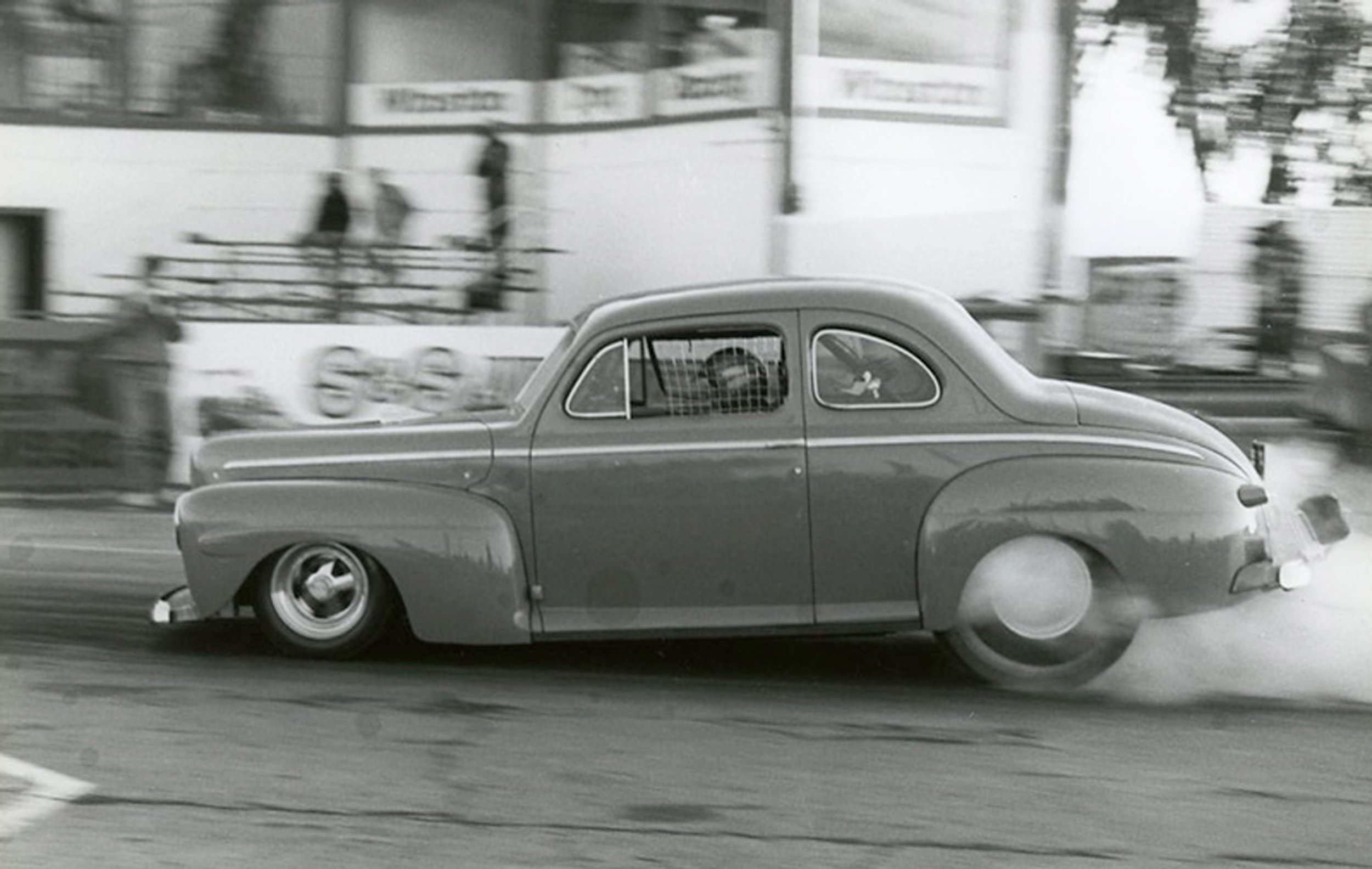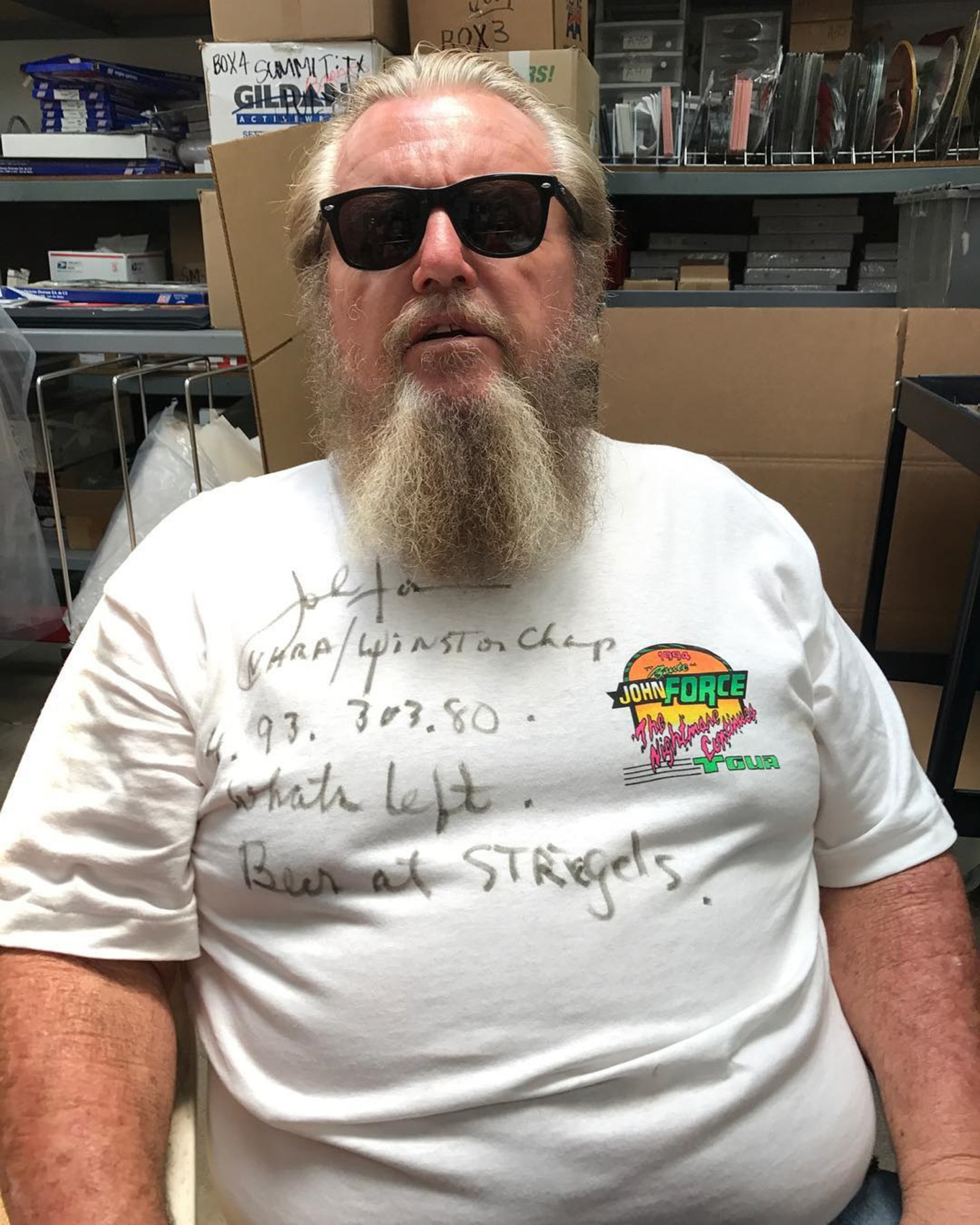Back in the ‘80s, when auto manufacturers were trying to figure out how to survive under new CAFE standards and more restrictive regulations, there were a handful of hot rodders that were perfecting an entire genre of cars. Termed “Fat Attack” by Hot Rod magazine, this style of hot rodding was rapidly growing in the vacuum created by the smog-wearing, plastic-fantastic vehicles on showroom floors. Based on those bulbous, but fabulous ‘40s-era autos, the flowing fenders, and swoopy hood lines lent themselves to such a concise description. And then a group of men seemingly – perfected it.
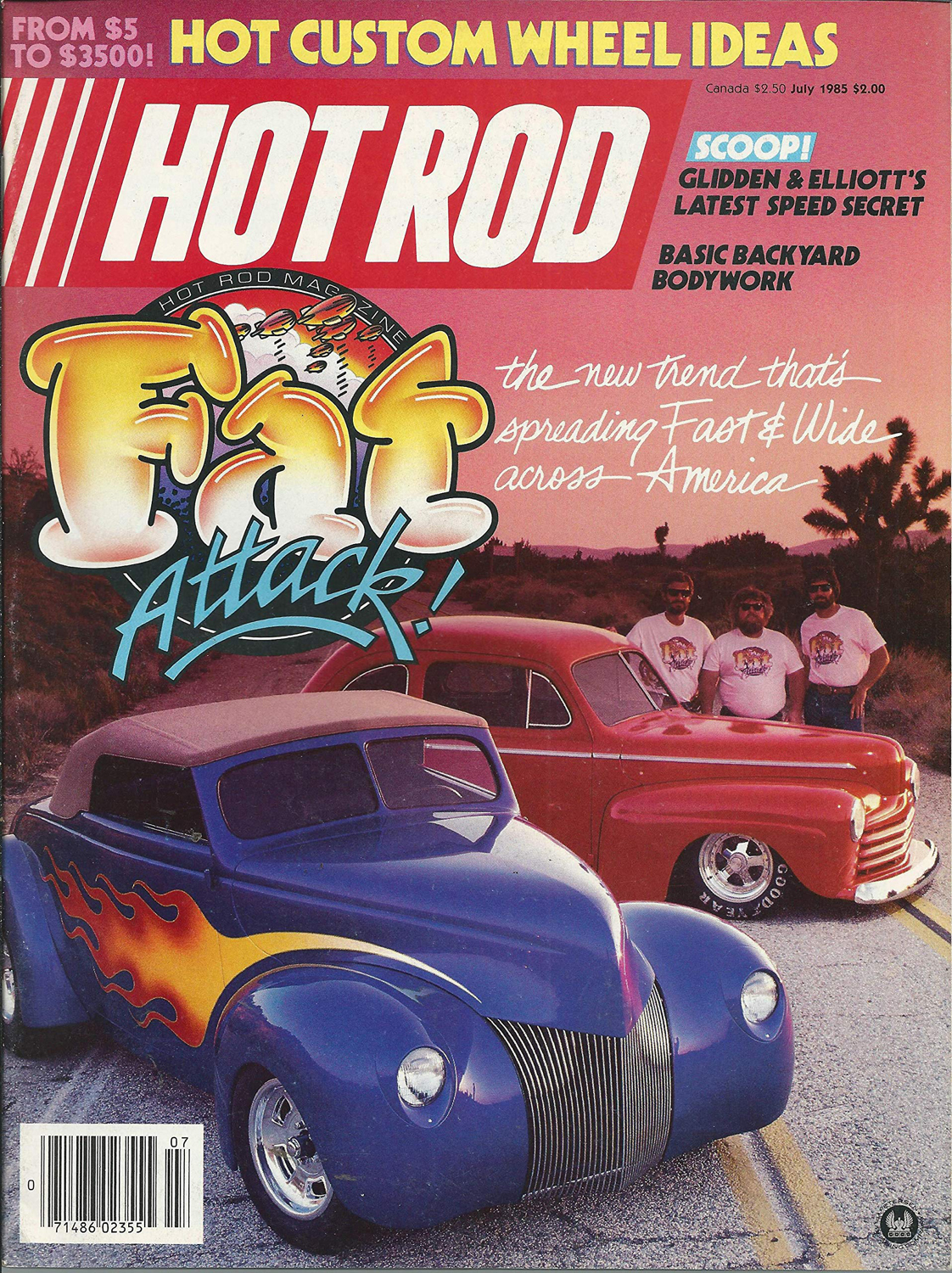
Posed next to Pete’s ’39 Ford on the cover of Hot Rod cemented Fat Jack’s ’46 Ford into the hearts and minds of millions of America’s youth.
Names like John Buttera, Pete Chapouris, and “Fat Jack” Robinson worked these behemoths into works of art, not only in appearance but in the way they worked. Fat Jack was most widely known for his blazing orange 1946 Ford. Before air bags, Fat Jack Robinson was fabricating his own front suspension, getting the car lower than anyone might have imagined. His eye for detail, and ability to get just the right stance, enamored his work in the hearts and minds of America’s youth. His work stood as a pinnacle of what every hot rodder wanted his (or her) car to be.
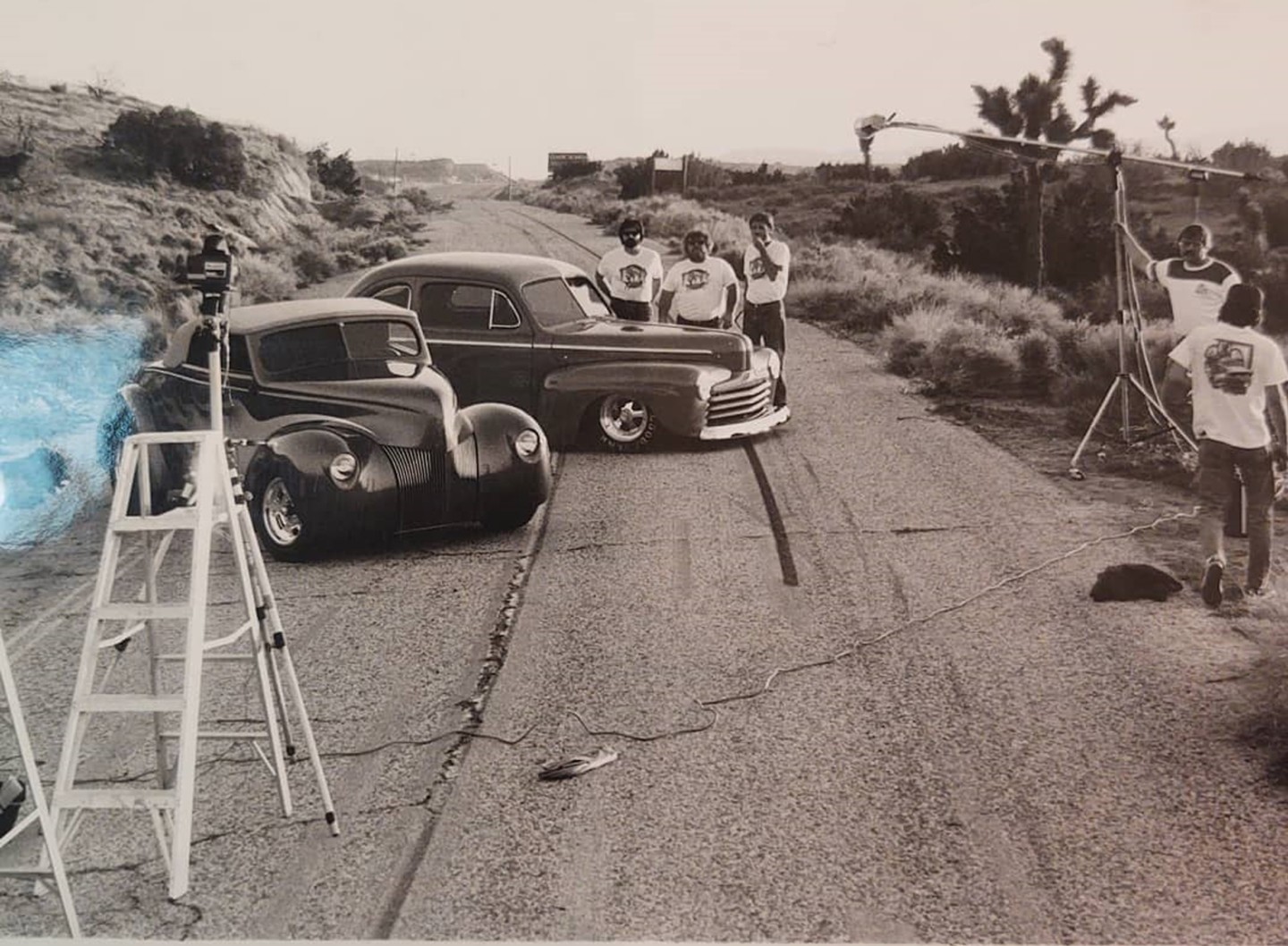
Fat Jack’s son, John Robinson, (aka Johnny Rotten), posted on his social media account about the shooting of the Hot Rod magazine cover. “When we shot the “Fat Attack” cover, from left to right, the photographer (don’t remember his name), Pete, Fat Jack, Jake, Leonard, Baskerville, and myself. I think I was 17.” What teenage American boy wouldn’t have given his beloved set of Snap-On tools to have lived this golden era of hot rodding so closely and in person?!!
His work was so influential that Hot Rod put his car on the cover of the July 1985 issue, besides Pete’s purple and flamed 1939 Ford. T-Shirts were made, celebrating the fat-fender era, with Fat Jack’s ’46 front and center. A revered and accomplished rod builder, Fat Jack worked his craft on many various autos, but it was always the Fat Attack ’46 that stood as the poster child for the movement.
Fat Jack's 46 Ford at the beginning of the fateful Fremont run. By the time the pass was over, the car would still fit in the trailer-- stacked, not driven.
The car was quick too and would prove it at every opportunity. Fat Jack’s ’46 was a regular combatant in the Nostalgia Drag Racing Association’s Super Street class, which was open to all pre-‘48 hot rods. The car was originally carbureted but eventually made to sip alky through a blower. Fat Jack’s son, John mentioned that in this final form, the car dipped into the nines in the quarter-mile, amazingly quick for the ‘80s.
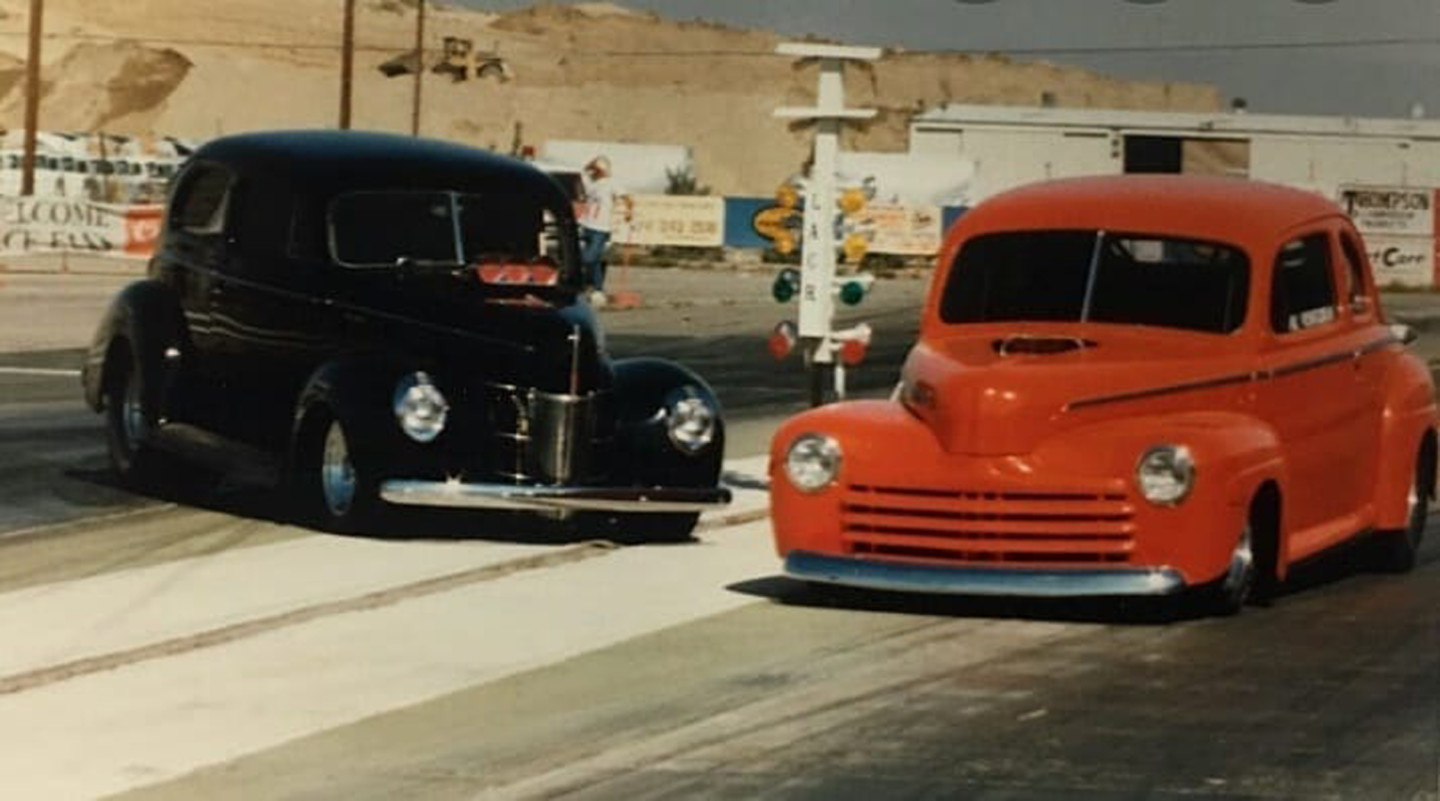
Fat Jack’s coupe was not only beautiful, it was fast too! Here it is with Jerry Moreland’s ’40 Ford sedan.
The now-defunct Badlands Raceway in Fremont, California was ground zero for the movement and the ’46 coupe could be seen there competing with the best of them in the class. During the Fremont spring meet in 1988, then driver Dave Condit hit high gear around half-track and the car turned right, dug in, and rolled. It is reported that portions of the car continued down the track, tripping the timers around the 10-second mark. Fat Jack vowed to replace the car with another Ford, a delivery, but that never materialized. The Fat ’46 went on to be remembered by Hot Rod magazine as one of its 100 Most Influential Hot Rods.
Fat Jack Robinson did continue building though. He had a shop in a town on the south end of Riverside county called Wildomar, in Southern California. Even though his work wasn’t in the public eye as much as a certain orange coupe had been, he was quite prolific at building cars and continued in this passion throughout his life. We were saddened to read reports on Instagram of his passing, his son John posting, “It’s with a heavy heart that I announce the passing of my pop, John “Fat Jack” Robinson. Those who knew him knew what a colorful character he was. Bye dad, we’ll miss you…..”
They say a true test of a man is the legacy he leaves behind. In “Fat Jack” Robinson’s case, he left behind a grand legacy of hot rodding and impacted an entire generation of hot rodders during a time when the future of rodding was so uncertain. His talent and ingenuity will always be remembered by those who admired it through ink and paper, and those who were fortunate enough to witness it first-hand. We are forever grateful, and our condolences go out to his family and close friends.

